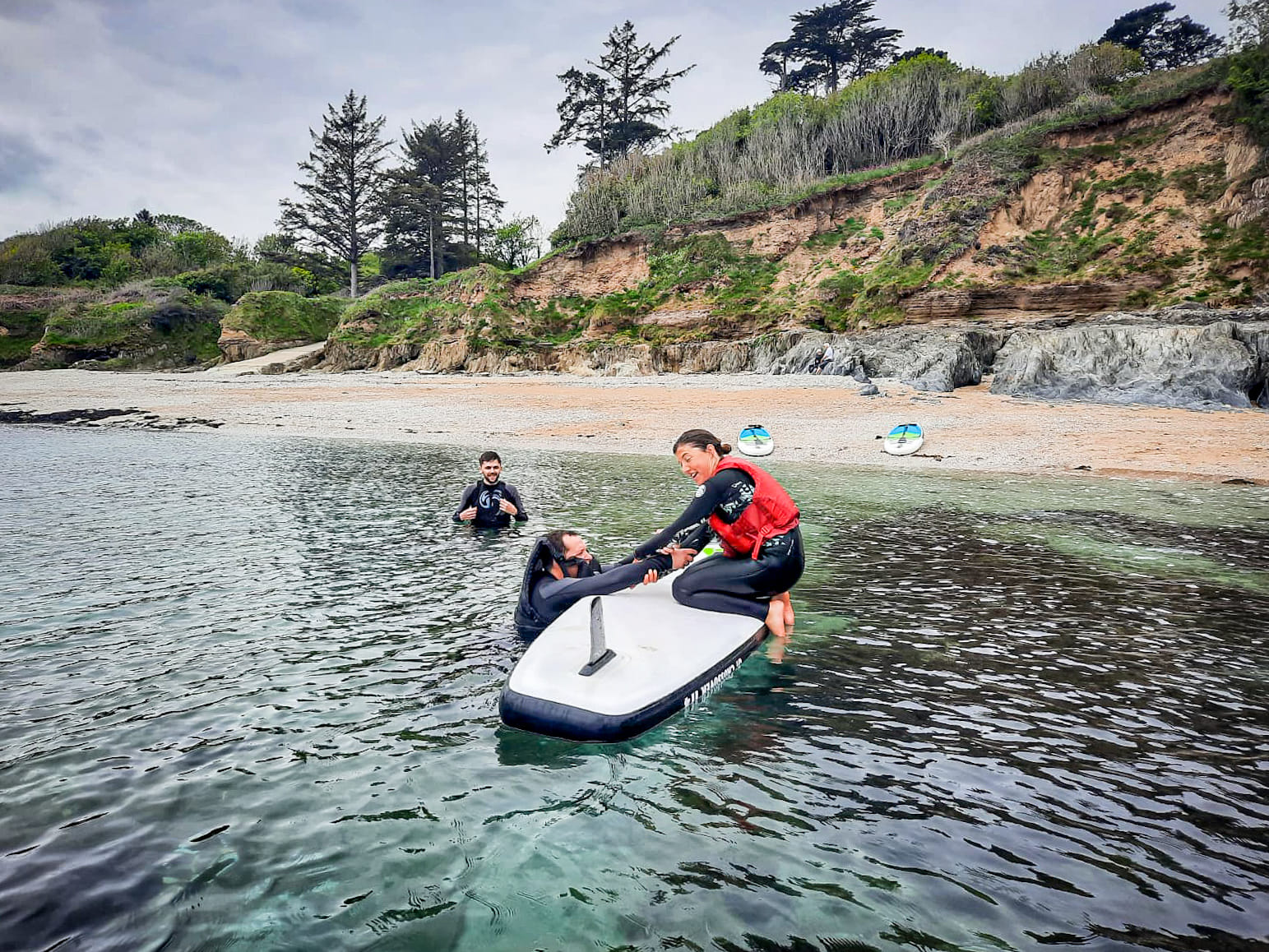How to Paddle Board
For the greatest start to your stand up paddle boarding trip, our How to Paddle Board guide offers a quick tutorial to getting on the water and some fundamental basics. We strongly advise taking lessons since you will learn important safety information and the fundamentals of paddling. For local paddle board teachers, see our Paddle Board Partners Page.
Most boards in our paddle board range are suitable for beginners but, for those who are just starting out and want to learn how to paddle board, the Quroc 10 6 Paddle Board is ideal. While being incredibly responsive, it is also very stable. You acquire confidence more quickly with a paddle board that is simple to manoeuvre. The Qi Crossover has all the on-water performance components built in as well to ensure that it aids in your paddling development all the way up to becoming a skilled stand-up paddle boarder.
How to Paddle Board for Beginners
There are various techniques you can try out when it comes to paddle boarding. Read on to find out what they are and how to perfect them. Practice and you’ll be a pro in no time!
How to Stand Up Paddle Board
Find a calm, sheltered stretch of water for your first attempt at stand up paddle boarding.
Stand by the side of your board in shallow water.
Hold the board by the edges and ease your way onto the board in a kneeling position, just behind the centre point of the board.
Move on to all fours and slowly move one foot at a time to place your feet where your knees were.
To stand, start by slowly raising your chest up while keeping your knees bent. Once your chest is vertical, extend your legs to stand up.
How to Paddle Board Straight
Ensure you are correctly balanced on the inflatable paddle board. Keep feet evenly spaced and an equal weight on each foot.
Keep your paddle as vertical as possible. If you paddle with your paddle shaft at an angle you will start to turn the nose of your inflatable paddle board. Try to position your top hand directly above your bottom hand with the paddle as close to the side (rail) of your board.
As you gain confidence, try incorporating the J Stroke into your paddle movement. This is where the paddle blade exits the water at an angle, achieved by moving your top hand down with a slight turn of the wrist away from you.
Step Back Turns on your Paddle Board
The step back turn is a great way of turning around quickly. This video demonstrates the key elements of this manoeuvre and gives you plenty of tips to help you master it.
Before you initiate the step back turn, ensure that the paddle is on your leash side. Your non-leash foot moves into the middle of the board and you step back with your leash foot. To make the board turn, take wide strokes on the leash side, the more you weight the back foot the sharper the turn.
Also known as a pivot turn or buoy turn, the step back turn is a sharp way of turning round and is great in every water environment. Spin the board on the spot with style.
The key to gaining confidence with the step back turn is to only move your feet during the paddle stroke. As with a peddle bike, your balance is far better when the board is moving.
Top Paddle Boarding Tips
DO: Hold the paddle at all times with one hand on the handle’s top and the other on the shaft.
DON’T: Place both hands on the shaft of the paddle and grip it like a broomstick.
DO: Maintain your feet shoulder-width apart, parallel stance, and nose-pointing toes.
DON’T: Take a surf position. Everyone wants to, but it will make paddling on flat water much more difficult. Also, you will stumble. Keep your surfing position for the waves.
DO: Make sure your grip is shoulder width apart on the paddle; shorter grips will result in a weaker stroke.
DON’T: Only use your arms to paddle; you’ll tire more quickly and paddle less effectively. Lean forward on your paddle stroke and let your powerful back muscles handle the bulk of the lifting.
We hope this has provided you with the foundation needed to start your paddle boarding journey! However, if you’re still struggling there’s no need to worry. Get in touch with one of our training partners for some lessons and you’ll be a pro in no time!


